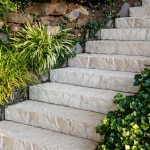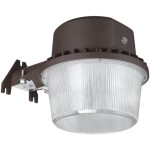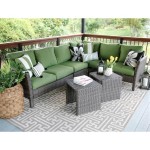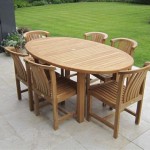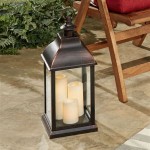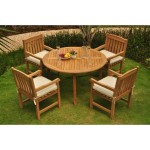Outdoor Hot Tub Flooring Options: A Comprehensive Guide
Selecting the appropriate flooring for an outdoor hot tub area is a multifaceted decision that transcends mere aesthetics. It involves considering factors such as durability, safety, maintenance, cost, and overall integration with the surrounding landscape. The chosen material must withstand the rigors of exposure to water, fluctuating temperatures, and regular foot traffic, while also providing a secure and comfortable surface for users. This article provides a detailed examination of various outdoor hot tub flooring options, outlining their respective advantages and disadvantages to assist in making an informed choice.
The immediate environment surrounding a hot tub is often subjected to significant moisture. Splashes, spills, and condensation are common occurrences, necessitating a surface that resists water damage and inhibits the growth of mold and mildew. Furthermore, a non-slip surface is paramount to prevent accidents, particularly when wet. The material should also be able to withstand the weight of the filled hot tub, as well as the weight of multiple occupants. Finally, ease of maintenance is a crucial consideration for long-term usability and enjoyment.
Durability and Material Considerations
The longevity of outdoor hot tub flooring is directly correlated with the durability of the chosen material. Factors such as resistance to weathering, impact, and fading should be carefully evaluated. Some commonly used materials include concrete, composite decking, wood decking, pavers, and rubber tiles.
Concrete: Concrete offers exceptional durability and can withstand significant weight and weathering. It is a relatively low-maintenance option, requiring only occasional cleaning. However, concrete can be susceptible to cracking in extreme temperatures and can become slippery when wet. Sealing the concrete surface can mitigate these issues, improving its water resistance and providing a textured surface for improved traction. Concrete can also be stained or stamped to enhance its aesthetic appeal and make it blend seamlessly with the surrounding environment.
Composite Decking: Composite decking is a popular choice due to its resistance to rot, decay, and insect infestation. It is typically made from a combination of recycled plastic and wood fibers, offering a low-maintenance alternative to traditional wood decking. Composite decking is available in a wide range of colors and styles, allowing for customization to match the existing landscape design. While generally slip-resistant, it's advisable to select products with enhanced traction, especially for areas prone to moisture. The initial cost of composite decking can be higher than wood, but its long-term durability and minimal maintenance requirements often offset the upfront expense.
Wood Decking: Wood decking provides a natural and aesthetically pleasing option for outdoor hot tub flooring. However, it requires regular maintenance to prevent rot, decay, and insect damage. Pressure-treated lumber is a common choice, but even this requires periodic sealing or staining to prolong its lifespan. Hardwood species such as redwood, cedar, and ipe are naturally more resistant to decay and insect infestation, but they also come at a higher cost. Wood decking can become slippery when wet, so it is important to consider adding a non-slip coating or selecting decking boards with textured surfaces.
Pavers: Pavers, made from brick, concrete, or stone, offer a durable and aesthetically versatile option for hot tub flooring. They are resistant to weathering and can withstand significant weight. Pavers are available in a wide range of shapes, sizes, colors, and textures, allowing for a high degree of customization. Proper installation is crucial to ensure a stable and level surface. A well-drained base is essential to prevent shifting and settling over time. Pavers can be relatively low-maintenance, requiring only occasional cleaning and resealing of the joints to prevent weed growth.
Rubber Tiles: Rubber tiles provide a soft, slip-resistant surface that is ideal for areas where safety is a primary concern. They are typically made from recycled rubber and are highly durable and weather-resistant. Rubber tiles are easy to install and can be interlocked to create a seamless surface. They are also relatively low-maintenance, requiring only occasional cleaning. While rubber tiles may not offer the same aesthetic appeal as other flooring options, they provide a practical and safe solution for hot tub areas.
Safety and Slip Resistance
The safety of users is paramount when selecting flooring for an outdoor hot tub area. Wet surfaces can pose a significant slip hazard, so it is essential to choose materials with adequate slip resistance. Several factors contribute to the slip resistance of a flooring surface, including its texture, material composition, and the presence of any coatings or treatments.
Textured surfaces provide better traction than smooth surfaces, particularly when wet. Concrete can be stamped or broom-finished to create a textured surface. Composite decking is often available with embossed or brushed finishes that enhance slip resistance. Wood decking can be grooved or ribbed to improve traction. Pavers come in a variety of textures, ranging from smooth to heavily textured.
Certain materials are inherently more slip-resistant than others. Rubber, for example, offers excellent slip resistance, even when wet. Some composite decking products are specifically designed with enhanced traction for wet environments. It is important to carefully review product specifications and test reports to assess the slip resistance of different flooring options.
Coatings and treatments can be applied to flooring surfaces to improve their slip resistance. Non-slip coatings can be applied to concrete, wood, and other materials to create a more textured surface. Sealants can also help to improve slip resistance by reducing the absorption of water. However, it is important to note that coatings and treatments may require periodic reapplication to maintain their effectiveness.
Beyond the flooring material itself, proper drainage is crucial for preventing water from pooling on the surface and creating slip hazards. The flooring should be sloped slightly away from the hot tub to allow water to drain away quickly. Adequate drainage channels or grates should be installed to collect and remove excess water.
Maintenance and Long-Term Cost
The long-term cost of outdoor hot tub flooring extends beyond the initial purchase and installation expenses. Maintenance requirements, lifespan, and potential repair costs should all be factored into the overall cost calculation. Choosing a low-maintenance material can save significant time and money over the lifespan of the flooring.
Concrete, composite decking, and rubber tiles are generally considered low-maintenance options. Concrete requires occasional cleaning and sealing. Composite decking requires minimal cleaning and may need to be re-stained or sealed periodically. Rubber tiles require only occasional cleaning. Wood decking, on the other hand, requires regular cleaning, sealing, and staining to prevent rot, decay, and insect damage. Pavers require occasional cleaning and resealing of the joints to prevent weed growth.
The lifespan of outdoor hot tub flooring varies depending on the material and the level of maintenance provided. Concrete can last for decades with proper care. Composite decking typically has a lifespan of 25-30 years. Wood decking may last for 10-20 years with regular maintenance. Pavers can last for 20-30 years. Rubber tiles typically have a lifespan of 10-15 years.
Potential repair costs should also be considered. Concrete can crack in extreme temperatures and may require patching or resurfacing. Wood decking can rot, decay, or suffer insect damage and may require replacement of individual boards or sections. Pavers can shift or settle over time and may require leveling or resetting. Composite decking and rubber tiles are generally less susceptible to damage and may require minimal repairs.
When comparing the long-term costs of different flooring options, it is important to consider all of these factors. While some materials may have a higher upfront cost, their lower maintenance requirements and longer lifespan may make them a more cost-effective choice in the long run.
Ultimately, the selection of outdoor hot tub flooring should be a carefully considered decision based on a comprehensive evaluation of durability, safety, maintenance requirements, cost, and aesthetic preferences. By understanding the advantages and disadvantages of various flooring options, homeowners can create a safe, comfortable, and enjoyable hot tub environment.

What Is The Best Hot Tub Base In 2025 6 Great Ideas

17 Backyard Hot Tub Privacy Ideas For A Serene Spa Timbertech

Best Hot Tubs And Spas For Your Outdoor Space The Home

The Best Hot Tub Foundation 6 Ways To Support Your Spa Koval Building Supply

What Is The Best Hot Tub Base In 2025 6 Great Ideas

Jacuzzi Outdoor Ideas Small Backyards

Best Hot Tubs And Spas For Your Outdoor Space The Home

Should I Put My Hot Tub On A Deck Master Spas Blog

Wood Teak Flooring Interlocking Deck Tiles Pool Patio Hot Tub Spa Garden Outdoor

Best Hot Tubs And Spas For Your Outdoor Space The Home


